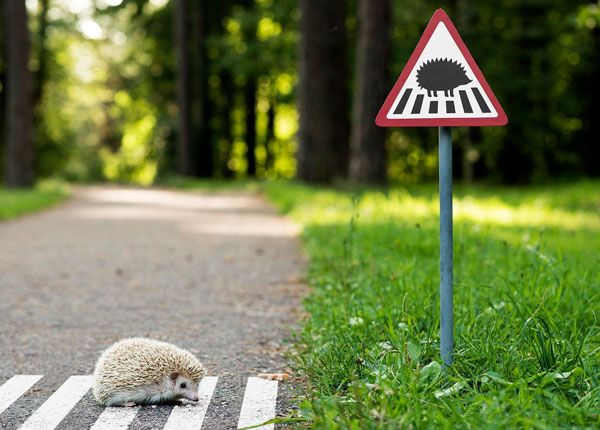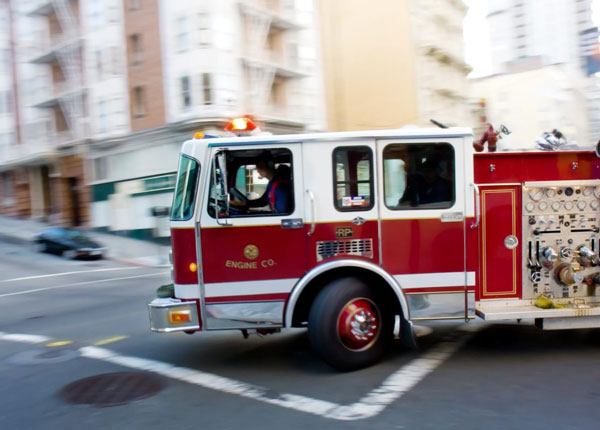
Collisions with Animals on the Road: Prevention Tactics, Reporting an Accident
Updated Nov. 20, 2020Drivers must keep a lookout for wild, domestic or farm animals crossing the roadway, particularly in rural areas. When a yellow, diamond-shaped animal warning sign is present, remain alert and drive with caution. Should you encounter a herd of animals crossing the road, stop your vehicle and allow them to cross. Only when the animals have completely cleared the highway should you proceed.
Collisions with animals
All drivers must know how to avoid a collision with stray or wild animals on the road. The latest data available from National Highway Traffic Safety Administration surveys indicates that there were 268,000 vehicle-animal collisions in 2008. Many vehicle-animal collisions go unreported, so the true figure is likely to be much higher than this. Of those incidents recorded, 13,000 resulted in injuries and 204 in fatalities.
How to minimize the chances of hitting animals
Vehicle-animal collisions are not just a rural problem. According to the Federal Highway Administration, 89 percent of collisions involving animals between 2001 and 2005 occurred on two-lane roads. This could lead people to assume that wildlife-vehicle collisions are only an issue in rural areas. In fact, two-lane roads are extremely prevalent in semi-rural areas outside large cities.
Here is what you can do to avoid a collision when an animal:
- 1

Take special care around deer warning signs.
Deer have adapted well to living near humans, so you are just as likely to encounter them in heavily populated areas. If you see a deer warning sign, it is there for a reason. - 2

Keep your high-beams on whenever it is safe to do so.
This will allow you to spot animals in the roadway at a greater distance. - 3

Reduce your speed at night.
Poor visibility means you may not see an animal soon enough to stop. - 4

If you see one animal, expect to see others nearby.
The Animal Protection Institute state that 70 percent of deer-car collisions happen when a driver has slowed down for one deer and then accelerated, failing to see another. - 5

Know when animals are likely to be active.
Deer are generally on the move in fall and early spring, around dawn and dusk. In the summer they are more likely to be sighted during the day. - 6

Be aware that animals are often more active during fair weather periods before storms.
When an accident cannot be avoided
You must not jeopardize vehicle control when avoiding a collision with an animal. While it is important to avoid injuring an animal wherever possible, preserving human life should be your priority. When you encounter an animal on the roadway:
- Do not slam on the brakes, as this could scare the animal into the path of another vehicle.
- Try not to swerve around the animal. This may not avoid a collision, as the startled animal could dart in front of your vehicle. Worse still, you could lose control and hit another vehicle, a pedestrian or a tree.
- Sound your horn while braking gradually. This should prompt the animal to move out of the way, or at the very least, minimize your speed upon impact.
- Swerving may be the best option ONLY to avoid a collision with a particularly large animal, such as a moose. You are likely to be seriously or fatally injured in a collision with an animal of this size. However, you should not swerve if doing so could take you into the path of another vehicle.
How to report an accident
If you hit an animal, pull over when it is safe to do so and call the police. Some states require drivers to report vehicle-wildlife collisions to the local wildlife or conservationist authority – this will be detailed in your state’s driving handbook. The police will usually need to be notified if:
- The collision caused significant damage to your vehicle, or injury to any person.
- The animal you hit is domestic or owned by another person.
- The animal is dead or injured in the roadway and is large enough to cause another accident.
Contact the police if you are not sure what action you should take, as they will be able to advise you. Do not approach an injured animal on the roadway – it may be dangerous.
Horse riders and horse-drawn vehicles
By law, any person riding or driving animals in the roadway has the same rights and responsibilities as a car driver. If you encounter a horseback rider or a horse-drawn vehicle, respect their rights and reduce your speed to 25mph. Keep in mind that a person riding a horse or driving a horse-drawn vehicle may raise their hand or otherwise signal that they wish a motorist traveling in the opposite direction to stop. Under such circumstances, you should bring your vehicle to a complete stop and remain stationary until the horse has safely passed you.




